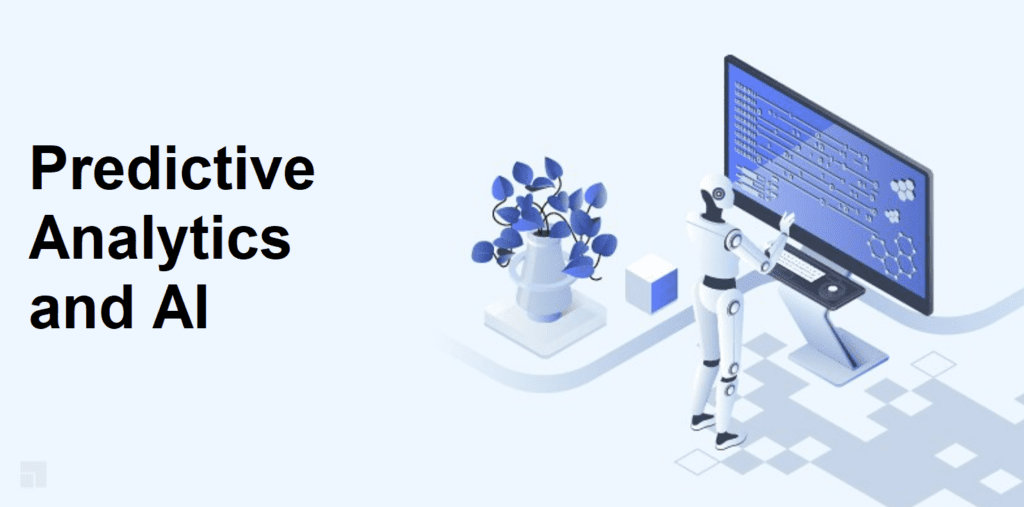In the fast-paced and dynamic landscape of marketing, businesses seeking a competitive edge need to stay ahead of emerging trends. Predictive analytics, powered by artificial intelligence (AI), has emerged as a game-changer in helping marketers not only understand current trends but also anticipate future shifts.
In this blog post, we’ll explore the transformative impact of predictive analytics on marketing, how AI is driving this change, and the strategic advantages it offers to businesses.
Understanding Predictive Analytics in Marketing
Predictive analytics involves using statistical algorithms and machine learning techniques to identify the likelihood of future outcomes based on historical data.
In the context of marketing, predictive analytics aims to forecast trends, customer behaviors, and potential opportunities or challenges.
By analyzing vast datasets, AI-driven predictive analytics models can uncover patterns and correlations that may not be immediately apparent to human analysts.
The Role of AI in Predictive Analytics
Predictive analytics is by no means a brand new concept.
However, artificial intelligence has massively accelerated the pace at which we can analyze and parse data for trending.
Here are some of the top areas where AI helps boost predictive analysis capabilities:
Data Processing and Analysis
AI excels at processing and analyzing large volumes of data swiftly and accurately.
Machine learning algorithms can sift through diverse datasets, including customer interactions, purchase history, and online behaviors.
With this capability, it can identify patterns and trends that contribute to more accurate predictions.
Complex Pattern Recognition
Predictive analytics often deals with complex, nonlinear patterns that may be challenging for traditional analytics tools.
AI can recognize intricate patterns and correlations.
Because of this, it is well-suited for uncovering hidden insights within vast datasets, allowing marketers to make informed decisions.
Continuous Learning
AI-driven predictive models continuously learn and adapt as new data becomes available.
This dynamic learning process helps the model to refine its predictions over time.
In this way, it ensures that marketing strategies remain relevant and effective in the face of evolving trends and consumer behaviors.
Anticipating Trends with Precision
Of course, this is more than just about making predictions. It’s about making accurate predictions.
The following are areas where AI helps improve the outputs:
Customer Segmentation and Targeting
Predictive analytics enables marketers to segment their audience more precisely.
By understanding the characteristics and behaviors of different customer segments, businesses can tailor their marketing messages and strategies to resonate with specific groups.
This ability will in turn enhance overall engagement and conversion rates.
Product and Content Recommendations
AI-powered recommendation engines use predictive analytics to suggest products or content tailored to individual preferences.
By analyzing past behaviors, these systems can anticipate what a customer might be interested in next.
With this ability, you can provide a personalized and seamless user experience.
Demand Forecasting
Predictive analytics plays a vital role in demand forecasting, helping businesses anticipate market demand for products or services.
This proactive approach allows marketers to optimize inventory, adjust pricing strategies, and allocate resources efficiently based on anticipated demand trends.
Driving Strategic Decision-Making with Artificial Intelligence
Analysis without action is akin to futility. You need to be able to apply the learning for profitability and business benefit.
Some key areas where you can really move the needle include:
Optimizing Marketing Campaigns
Predictive analytics empowers marketers to optimize their campaigns for maximum impact.
By forecasting the performance of different marketing channels, strategies, and content types, businesses can allocate resources effectively, ensuring a higher return on investment (ROI).
Reducing Customer Churn
AI-driven predictive models can identify early signs of customer dissatisfaction or potential churn.
This allows marketers to implement targeted retention strategies, such as personalized offers or proactive customer support, to mitigate churn and strengthen customer loyalty.
Allocating Budget and Planning Finances
Predictive analytics aids in financial planning by providing insights into future market trends and potential revenue streams.
This information is invaluable for businesses when allocating budgets, determining resource needs, and planning for future growth.
Challenges and Considerations in Implementing Predictive Analytics
While the benefits of predictive analytics in marketing are substantial, there are challenges to consider:
Data Quality and Privacy Concerns
Accurate predictions rely on high-quality data.
If you want to succeed with this sort of initiative, you MUST ensure data accuracy and address privacy concerns from the start.
Model Interpretability
Understanding and interpreting the outputs of complex predictive models can be challenging.
To implement this system most effectively, you will need to strike a balance between model accuracy and interpretability.
Integration with Existing Systems
In order to implement predictive analytics, you will almost certainly have to integrate it with existing systems and processes.
If you want to realize the full potential of predictive models, you will have to ensure that all required integrations are seamless and real-time.
Conclusion: The Future of Predictive Analytics and AI in Marketing
Predictive analytics, fueled by AI, is reshaping the marketing landscape.
It provides businesses with the tools to precisely anticipate trends, understand consumer behaviors, and make strategic decisions.
As technology continues to advance, businesses that harness the power of predictive analytics will find themselves at the forefront of innovation.
These capabilities will help them drive marketing strategies that are not only responsive to current trends but also anticipatory of the ever-evolving market landscape.
Embracing AI-driven predictive analytics is not just a strategic choice. It’s a forward-looking investment in the future of marketing excellence.
Feature Image Attribution (CC 2.0): Deepak Pal on Flickr
Tommy Landry
Latest posts by Tommy Landry (see all)
- AI Traffic Is Changing the Funnel, and Marketers Need to Catch Up - July 1, 2025
- How to Optimize for Retrieval-Augmented Generation (RAG) - June 24, 2025
- From Overwhelm to Action: Building AI Skills Inside Your Marketing Team - June 17, 2025





